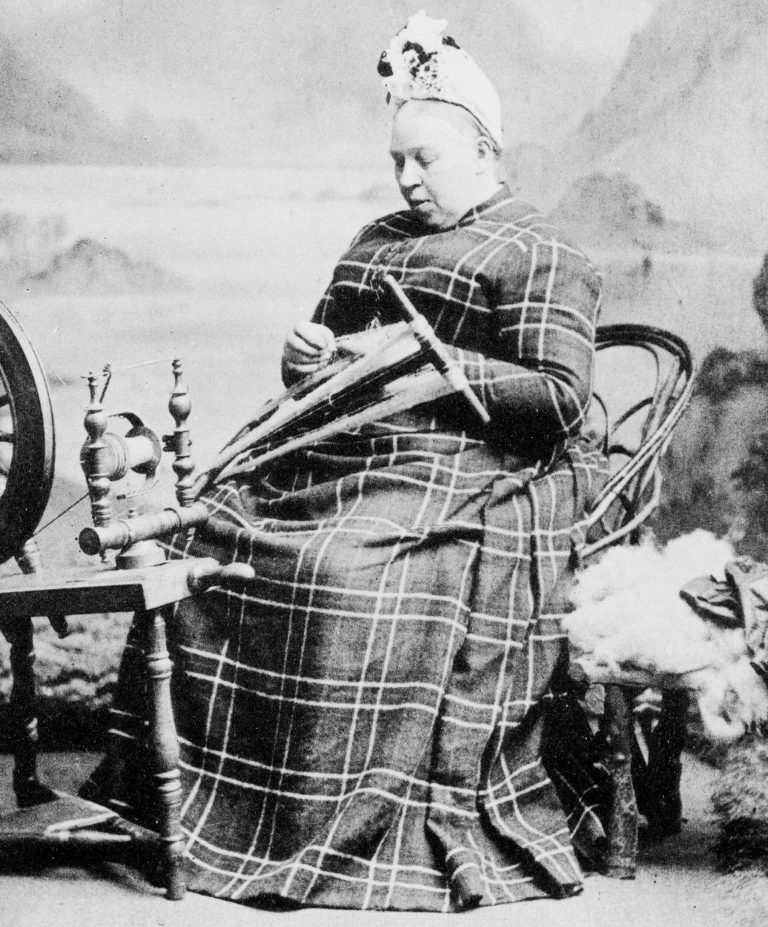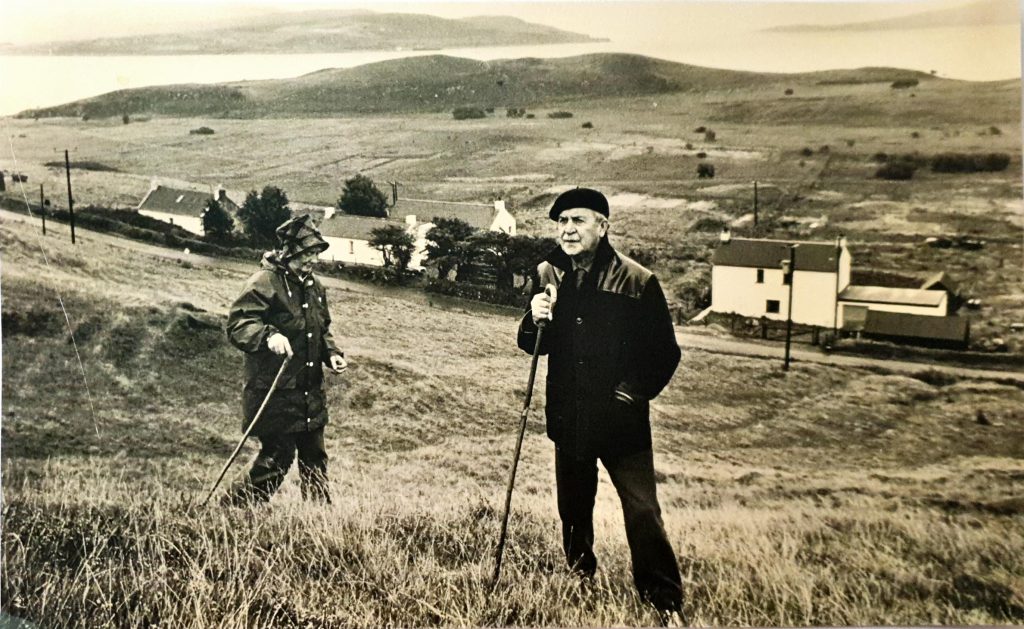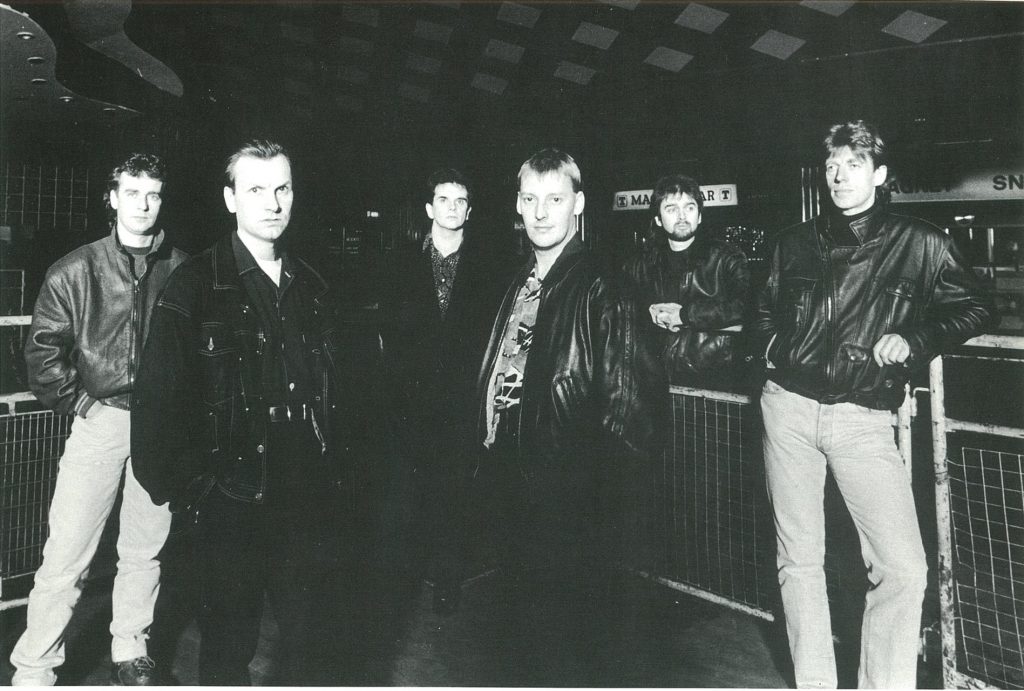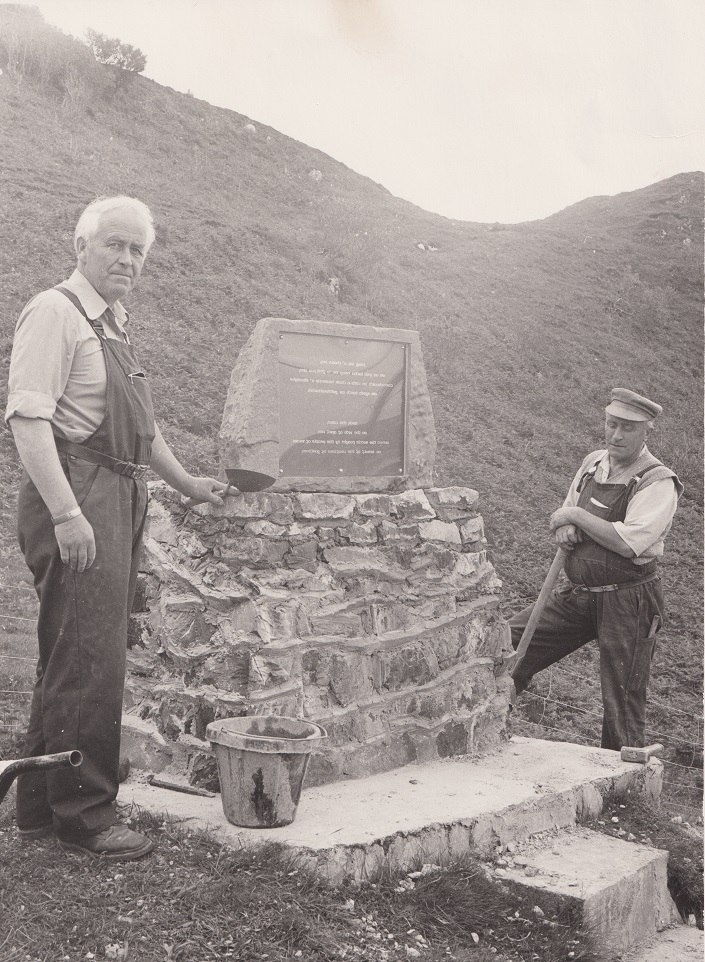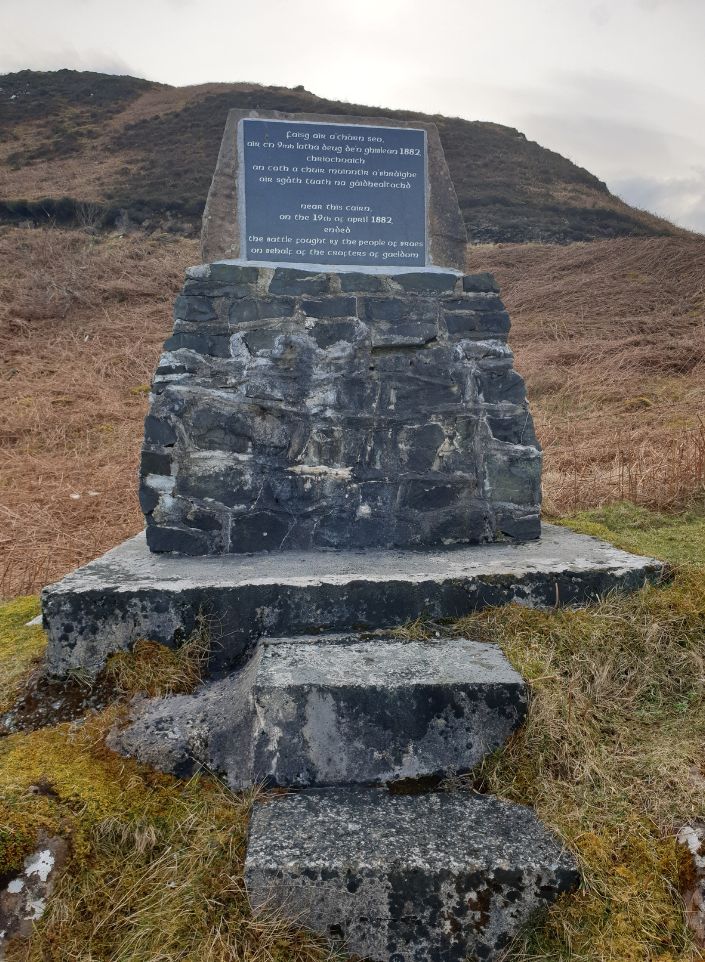Song and poetry have long been, and still remain, an important medium for the expression of history, cultural identity and political views in the Highlands. Since the Battle of the Braes was fought, it has influenced some of Skye’s best-known artists, including Skye born political poet Màiri Mhòr nan Òran, Raasay born Gaelic poet Sorely MacLean and Skye’s world-renowned Celtic rock band Runrig.
Màiri Mhòr nan Òran (Big Mary of the Songs)
Màiri Mhòr nan Òran (Big Mary of the Songs) was a renowned Gaelic poetess and political activist famous for her songs of exile and powerful prose during the days of the Highland Land League.
Born on the 10th March 1821 in Skeabost on the Isle of Skye, Màiri lived and worked in Inverness and Glasgow. In 1871, while working as a domestic servant, Màiri was accused by her employer of stealing a piece of clothing and after standing trial and being found guilty of the offence, was sentenced to 40 days in prison.
Màiri was humiliated by this ordeal and never forgot it, spending the rest of her life protesting her innocence and expressing her anger through her poetry. She wrote that it was the shame she suffered that brought her poetry to life.
Màiri returned to the Isle of Skye in 1882 where she was actively involved with the crofters fight for land rights. Known throughout the Highlands and Islands as the Bard for the Highland Land League, Màiri’s songs were a powerful way to spread information about the crofters fight amongst a community of working people, many of whom could not read or write.
One of her most famous songs Òran Bèinn Lì was composed after the crofters in Braes won their 1882 court case to have their grazing rights on Ben Lee returned to them along with their rents being reduced to a fair price. The following extracts and translations are from Òran Bèinn Lì and give a sense of both the crofters’ struggle and the community pride in their achievements:
‘S na diùlnaich a b’ uaisle, ‘S nach robh riamh ann an tuasaid, Chaidh na ruighich a shuaineadh’ Gu cruaidh air an dùirn
And the heroes most noble, that were never before in a fight, the handcuffs were twisted, hard on their fists.
‘S na mnathan bu shuairce, ‘S bu mhodhaile gluasad, Chaidh an claiginn a spuaiceadh’ Ann am bruachan Beinn Lì.
And the kindliest women, of conduct most mannerly, their skulls were broken, On the braes of Beinn Lì.
Listen to Catherine Anne MacPhee sing Òran Bèinn Lì here.
Sorley MacLean
Sorley MacLean was one of the foremost Gaelic poets of the twentieth century and many of his works, including “Dàin do Eimhir” (“Poems to Eimhir”), “Hallaig”, and “An Cuillithionn” (“The Cuillins”), have become seminal texts in Gaelic culture.
“An Cuillithionn” (The Cuillins) takes the mountain range of the Cuillins as its central figure, using it as a symbol through which to explore the competing political ideologies in Europe at the time of writing in 1943. The legacy of the Clearances, the Crofters’ War and the Battle of the Braes is felt throughout, shaping the identity and outlook of the poem. In this extract, MacLean portrays the problems of depopulation on the islands, giving a sense of the degradation of community and culture worsened by the lack of heroes on Skye now that the men of Braes are gone. These themes have continued importance today. However, hope is not lost, as embodied by the word “fhathast” (“yet”).
Seo latha eile air na slèibhtean
‘s na Sitheanaich fhathast gun èirigh;
seo latha eile air na raointean
‘s an t-Eilean Mòr a’ call a dhaoine;
seo latha eile a’ breacadh iarmailt
nach toir sàsachadh don iargain:
seo latha eile a’ bristeadh fàire
nach fhaic an aoibhneas no an gàire;
seo latha eile ri mo shùilean
nach toir faochadh do na rùintean
a tha a’ leantainn gach bliadhna
is i a’ snàgadh gu a ciaradh.
Chan eil agamso mo dhaoine
a chionn fir a’ Bhràighe bhith air aomadh;
‘s cha robh MacCruimean no MacMhuirich
ann am-bliadhna no an-uiridh;
agus ma ruigeas mi a-màireach,
bidh mo chuibhreann anns an tàmailt.
(Earann II: 138-155)
Another day upon the mountains
and the Skyemen not yet risen;
another day this upon the moors
and the great Island losing its people;
another day this, dappling the firmament,
that will give no satisfaction to their yearning;
another day this, breaking the horizon
that will see neither their joy nor laughter;
another day this before my eyes
that will give no respite to the desires
that follow each year
as it creeps to its gloaming.
I am without my people
since the men of Braes have failed:
and there was neither a MacCrimmon nor MacPherson
with us this year nor last;
and if I reach tomorrow,
my portion will be the same.
(Part II: 138-155)
Runrig
A Scottish Celtic rock band formed on Skye in 1973, Runrig released fourteen studio albums, with many of their songs sung in Gaelic. Their lyrics focus on the heritage, politics, and people of Scotland, while making reference to the historical struggles around agriculture and land in the Highlands and Islands.
Recovery is the third album by Runrig, released in 1981. The album focuses on the cultural heritage and history of the Gàidhealtachd and celebrates a newfound sense of identity in the Scottish Gaelic community. The titular song, “Recovery”, is about the Highland Land League Movement of the 1880s and makes reference to the “Braes’ men” and the Glendale martyr, John MacPherson.
Recovery by Runrig
Watching the morning come in on the land
See the moon roll over Skeabost
See the young men late in the glen
All with camans in hand
Sea winds out on the wild
Sea waves crash onto Uig
See the black homes strung out in a line
Cross the island of Skye
I can’t believe
That it’s taking all this time
I can’t believe
My life and my destiny
After the clans, after the clearings
Here I am
Recovering
Should have been home before daylight
It’s not easy when you’re down and hungry
One from the late run rolled up in a coat
I make my way across the moor
For a late summer in ’84
But now there’s a new day dawning
I’ve heard the Braes men talk in Portree
The news from Glendale
And I can’t believe
That it’s taking all this time
I can’t believe
My life and my destiny
After the clans, after the clearings
Here I am
Recovering
Still the morning comes in on the land
See the new sun red and rising
See the corn turn ripe in the fields
See the growth in the glen
And MacPherson’s in Kilmuir tonight
What a night for a people rising
And oh God not before time
There’s justice in our lives
Lyrics © Calum Macdonald
When Runrig’s Calum Macdonald was asked in an interview which single event he felt had changed the course of Highland history the most (for better or worse) he answered…
“I suppose it has to be Culloden, but after that, the moment when the first woman threw the first stone or clump of earth at what became known as the Battle of Braes – that was the start of the cultural fightback.”
To read the transcript of Calum’s interview click here.
Memorialisation
In 1980, nearly 100 years after the Battle of the Braes, a cairn was built to commemorate the Battle and to give thanks to the crofters involved. The inscription on the memorial, written by Sorley MacLean, links the Battle of the Braes with the wider Skye uprisings.
“an cath a chuir muinntir a’bhrάighe air sgάth tuath na gάidhealtachd”
“The Battle fought by the people of Braes on behalf of the crofters of Gaeldom”
If you would like to hear more about what our archives can tell us about crofters, cottars and the Napier Commission, you can view our ‘Learn with Lorna’ talk on the subject here.
